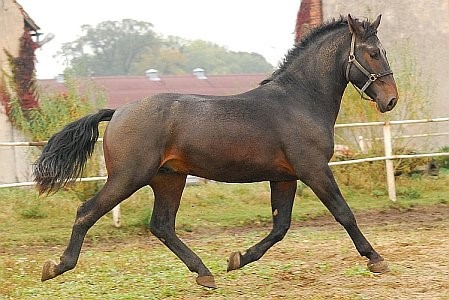Silesian (or Kon slaski, or Slunski kun) horses are warmblooded
horses from the area of historic Silesia, which lies mostly within modern
Poland. They are the heaviest of the Polish warmblood breeds, and have been
influenced mainly by Thoroughbred and Oldenburg horses, and partly by East
Friesian and German halfbreds. The Oldenburg influence was particularly
pronounced after World War II, when imported stallions were used to keep the
breed from becoming extinct. Two types are recognised in the breed standard, an
old and a new.
At 3 years old, stallions of the old type stand 160 - 170
centimetres (15.3–16.3 hands) at the withers, mares about 2 cm less; the girth
is 190 - 210 cm (75 - 83 in), and the cannon-bone circumference about 23 - 24
cm. The new or racing type is taller and lighter, stallions standing 164–170 cm
(16.1 - 16.3 hands) at the withers and mares about 2 cm less; the girth
measures 185 - 200 cm and the cannon-bone 21.5 - 23 cm. Stallions average 650
kg (1,430 lb), mares 600 kg. The current stud-book dates from 1961; registers
for this type of horse have been kept since the late 19th century. In 2008 the
breed numbered about 5000.
